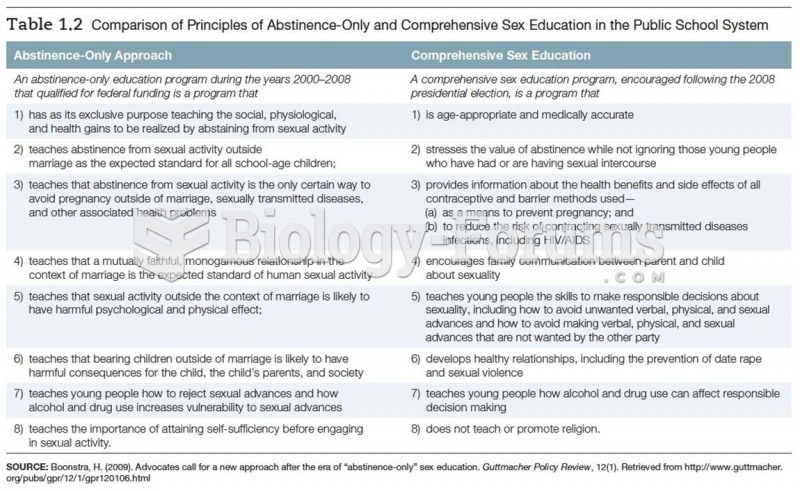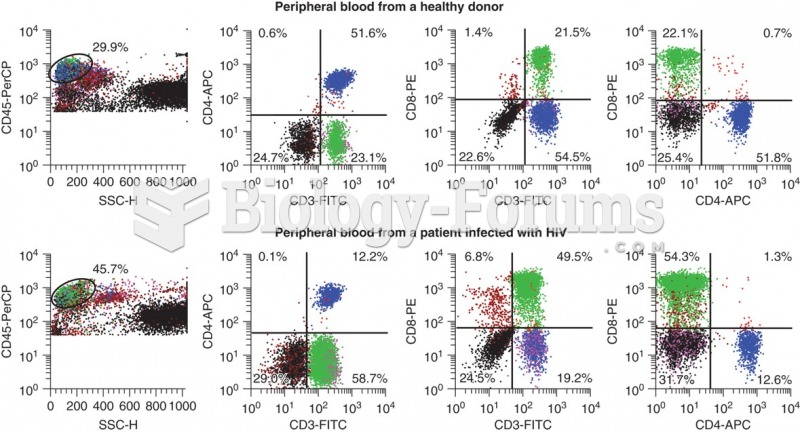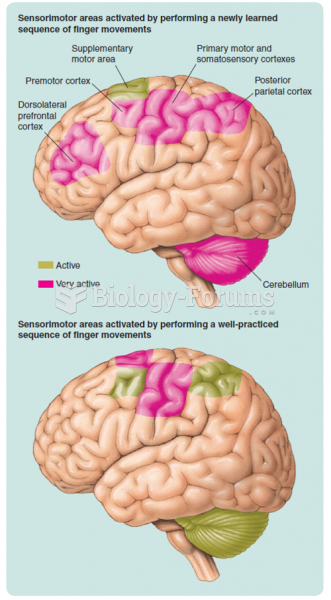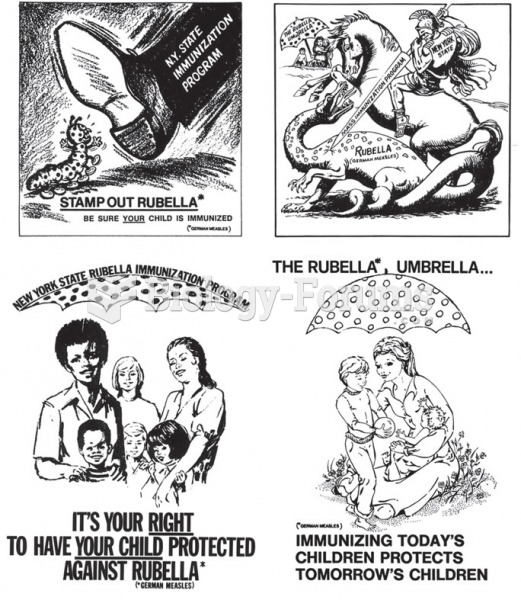|
|
|
Drying your hands with a paper towel will reduce the bacterial count on your hands by 45–60%.
The most common childhood diseases include croup, chickenpox, ear infections, flu, pneumonia, ringworm, respiratory syncytial virus, scabies, head lice, and asthma.
Malaria was not eliminated in the United States until 1951. The term eliminated means that no new cases arise in a country for 3 years.
People who have myopia, or nearsightedness, are not able to see objects at a distance but only up close. It occurs when the cornea is either curved too steeply, the eye is too long, or both. This condition is progressive and worsens with time. More than 100 million people in the United States are nearsighted, but only 20% of those are born with the condition. Diet, eye exercise, drug therapy, and corrective lenses can all help manage nearsightedness.
Earwax has antimicrobial properties that reduce the viability of bacteria and fungus in the human ear.
 Comparison of Principles of Abstinence-Only and Comprehensive Sex Education in the Public School Sys
Comparison of Principles of Abstinence-Only and Comprehensive Sex Education in the Public School Sys
 Flow cytometry data that shows the differences in CD3+ CD4+ cells that occur with HIV infection. ...
Flow cytometry data that shows the differences in CD3+ CD4+ cells that occur with HIV infection. ...





